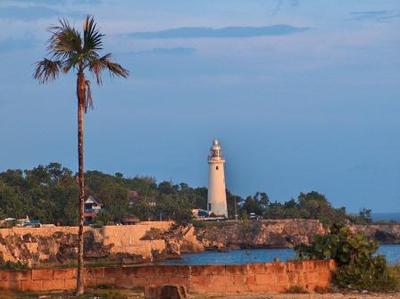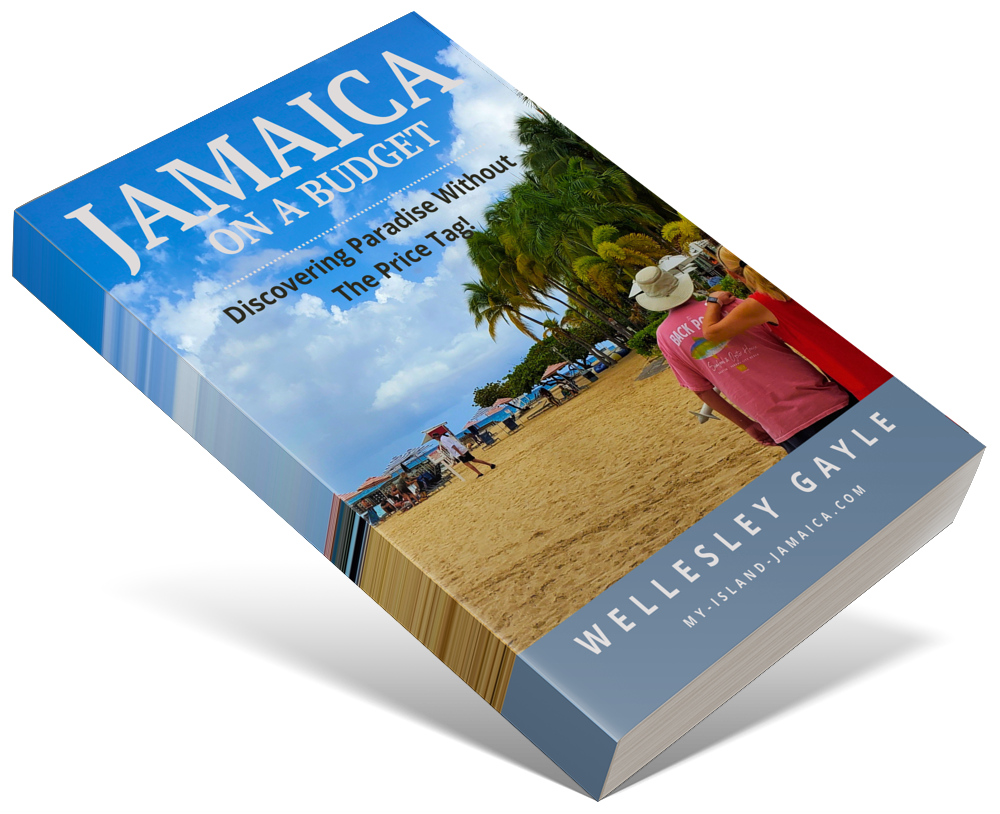Subscribe for all my updates and don't miss a thing! Sign me up!
Lighthouses in Jamaica
by Sheree-Anita Shearer | Associate Writer

Photo: Negril Point Lighthouse, Westmoreland
Lighthouses are majestic edifices that seemingly light up magically to guide seafarers. They were much more important in the past but now they are recognized mostly for their historical value.
Jamaica has seven lighthouses across the island, all with their own unique characteristics. Did you know that Jamaica is home to the tallest lighthouse in the Western Hemisphere? Do you know which lighthouse is a part of Jamaica’s most popular romantic mystery? Continue reading to find out!
- Morant Point Lighthouse, St. Thomas - The oldest lighthouse on the island was built in 1841. It is 100 feet tall with a diameter of 5 feet at the base and 3 feet at the cap. Designed by Alexander Gordon and contracted by George Grove, the lighthouse has a round cast-iron tower with a lantern and a gallery.
The cast was built in London and shipped to Jamaica to its current location on the most easterly point of the island. It was erected by the free Kru-men of Africa who were brought to the island. This cast-iron lighthouse is the first of its kind in the Western Hemisphere.
The lighthouse is painted in horizontal stripes of orange and white so it can be seen during the day and at night, there are three white flashes of bright white light every 20 seconds to make navigation easier.
Access to the lighthouse is limited if it rains as the original road was destroyed by Hurricane Gilbert in 1988. It is now only accessible via a dirt path that leads to the site. It might even include a little hike but the view of the sea and the Blue Mountain are well worth it!
It was declared a National Monument by the Jamaica National Heritage Trust on grounds that it is a historic monument of considerable importance to historians and industrial technology and rightfully so. It is featured on the Jamaica Post’s $50 stamp. - Plumb Point Lighthouse, St. Andrew - The second oldest lighthouse in Jamaica was built in 1853 to safely guide the ships coming into the Kingston Harbour to dock. This was built using two materials; local sandstone at the base and cast iron used to construct the top half of the lighthouse.
There are two lights, the red, visible from 12 miles out, beaming in a southerly direction while a white light shines across the east for 25 miles. The light flashes for half a second every 7.5 seconds. The 70 ft tall lighthouse is said to have only gone out once since being made, in the 1907 earthquake of Port Royal. The position of the Lighthouse is latitude 170 56' north and longitude 760 47'&30" west. - Folly Point Lighthouse, Portland - Located at 18.188862°N 76.443104°W is the Folly Point Lighthouse in Jamaica. Constructed in 1888, it was built from bricks and also has a lantern and a gallery. The fireproofed lighthouse is visible from 13 miles out. This solar-powered light flashes for 2 seconds every 8 seconds. There is also a beautiful garden located on the site.
- Portland Point Lighthouse, Clarendon - Funnily enough, the Portland Point lighthouse is located in the parish of Clarendon at the Portland Ridge. At latitude 170 44′ 9″ north and 770 9′ 58″, the highest tower on the island stands at 145 ft.
The open-framed, orange and white, square steel construction hosts a lantern and a gallery which is accessed by its 129 steps. There are two white lights that flash every 15 seconds in quick succession of each other. - Galina Point Lighthouse, St. Mary - This 40 ft tall concrete lighthouse is located near Port Maria in the parish. The Galina Point is painted a stark white with solar-powered light at the top. This light, which is 60 ft above sea level, flashes for a duration of 1.2 seconds after 10.8 seconds of darkness. The light is visible from 12 miles away.
This lighthouse is different in that it does not have a lantern, instead, its solar-powered lens is mounted at the top on a small platform. The coordinates of the Galina Point Lighthouse are 18.410037°N 76.892589°W. - Lover’s Leap Lighthouse, St. Elizabeth - While this location is a popular attraction for tourists and locals alike, more often than not it's the legend of star-crossed lovers and a very jealous slave owner that brings people to the location. However, the lover’s leap lighthouse is a star on its own. The newest lighthouse to be built in Jamaica is also the lighthouse standing on the highest point in the western hemisphere at 1600 ft above ground. The lighthouse itself is a 30 ft cylindrical shaped steel structure. It boasts a tower equipped with a lantern and a gallery.
The Lover’s Leap Lighthouse has three different sources of power, a generator, electricity and batteries. As the evening gives way to night the light from the lighthouse rotates briefly, magically lighting up distant areas such as Newell, St. Elizabeth. It takes about 10 seconds to complete a rotation.
It was declared a National Monument by the Jamaica National Heritage Trust in September of 2002 and is located at 17.869232°N 77.660466°W - Negril Point Lighthouse, Westmoreland - Negril is known for its beautiful stretch of white-sand beaches. The views of Negril’s greatest attraction coupled with a beautiful sunrise or sunset from the lighthouse located at 18.2485° N, 78.3606° W, is something else altogether.
The 66 ft concrete tower is painted white and is 100 ft above sea level. This tower was built over a tank 14 ft deep to keep the tower balanced and secure in the event of an earthquake. This engineering was expertly done by the French company Bubbler and Bernard in 1894. To aid with visibility, the structure was painted white. The solar-powered white light automatically flashes every 2 seconds.
Did you notice that each lighthouse has a different time between flashes of light? This actually is an identification signal. Did you know that the light helps the traveller to calculate the distance from land? Imagine that!
Have you ever wondered if lighthouses work in the daytime? Me too. Actually, there is a “daymark requirement" so lighthouses are carefully painted to be conspicuous in the daytime; lighthouses on the shore are usually painted white and in the open sea or against a light background contrasting colours in bands of (usually) red or black, are preferred.
Lighthouses used to have keepers but nowadays the use of lighthouses have somewhat dwindled due to the use of more advanced, computerised technology to guide seafarers.
These lighthouses however are important to the architectural history of the island and are protected by the Jamaica National Heritage Trust and are also in the care of the Jamaica Port Authority.
While there are talks to convert these lighthouses into fully operational attractions, only the Lover’s Leap lighthouse has been converted.
I also recommend you read, Lover's Leap, Jamaica.
Regards,
SS
References:
- Lighthouse - Intensity, visibility, and character of lights, Britannica, https://www.britannica.com/technology/lighthouse/Intensity-visibility-and-character-of-lights#ref72159
- Lover's Leap, Jamaica, My-Island-Jamaica, https://www.my-island-jamaica.com/lovers-leap-jamaica.html
- Folly Lighthouse, Portland, Jamaica, learn about it & similar structures. Edbtravel.com, https://www.edbtravel.com/folly-lighthouse-a-brief-history-of-light-houses-in-jamaica/historic-sites/
- Lighthouses - Jamaica, Jamaica National Heritage Trust, http://www.jnht.com/lighthouses.php
Written: September 4th, 2021
New! Get My Latest Book👇🏿
|
You asked, I've answered! You no longer need to save for months or years, to enjoy paradise! I spilled the beans! sharing my top tips on finding cozy accommodations and secret gems, only the way a native could! Click Here to pick it up on my e-store and start saving now! |
See The Best Of Jamaica - In Videos!
|
My channel reaches over 140,000 subscribers worldwide and has leveraged over 11 million views, sharing, what I call 'The Real Jamaica'. Subscribe today and join our family of viewers. |
Read More ...
New! Experience The REAL Jamaica!
Book Your Private Tour here and experience Jamaica the way we (locals) do!
P.S. Didn't find what you were looking for?
Still need help?
Click Here to try our dependable and effective Site Search tool. It works!
Or, simply click here and here, to browse my library of over 500 questions and answers! Chances are someone already asked (and got an answer to) your question.





